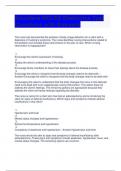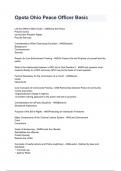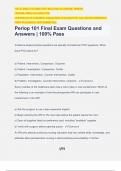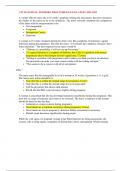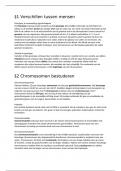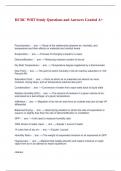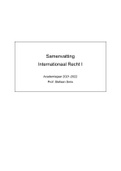Exam (elaborations)
Saunders NCLEX Endocrine Test Questions with Answers
- Module
- Institution
Saunders NCLEX Endocrine Test Questions with Answers The nurse has documented the problem of body image distortion for a client with a diagnosis of Cushing's syndrome. The nurse identifies nursing interventions related to this problem and includes these interventions in the plan of care. Which nu...
[Show more]
